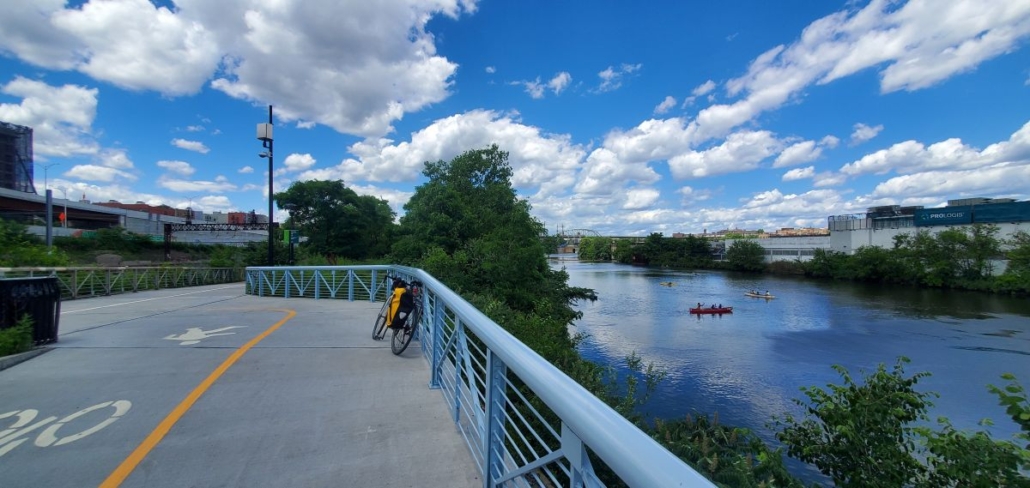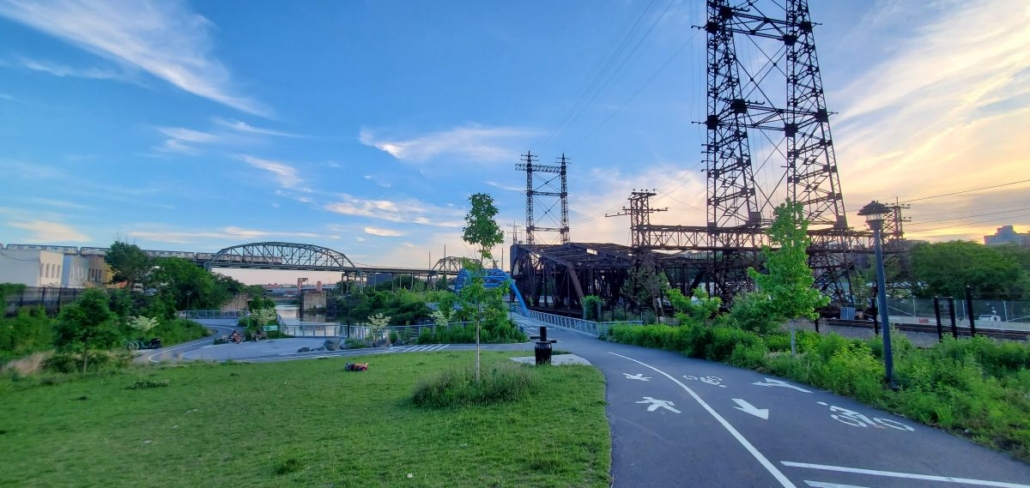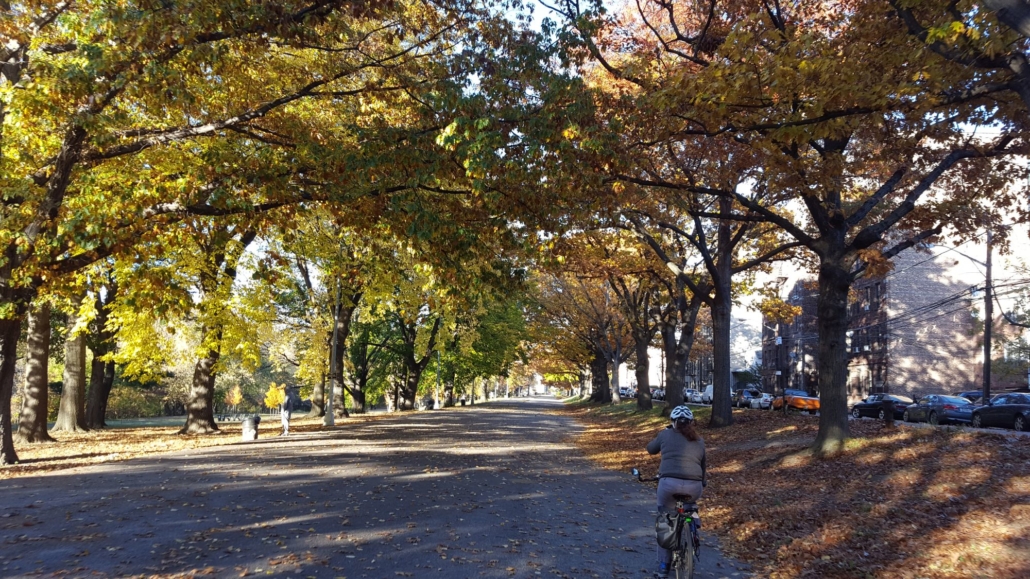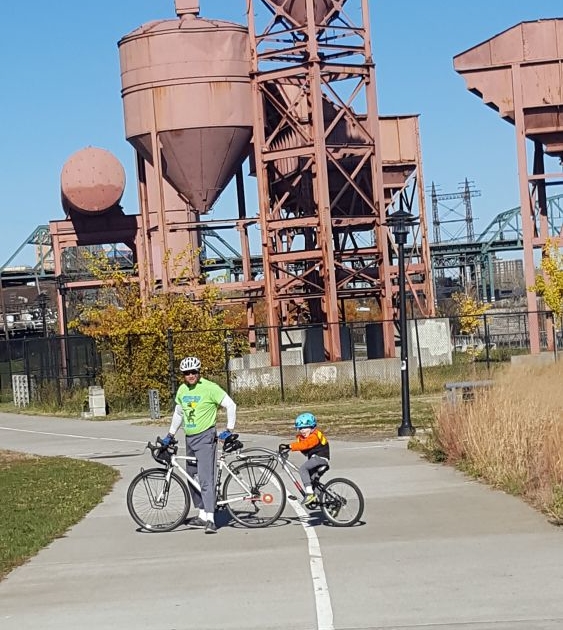Biking the Bronx River Greenway
The Bronx River Greenway is a fascinating and fun place to ride a bike. It follows the Bronx River for (almost) its entire length in the Bronx, taking you through areas that were once heavily industrial, but are now beautiful parks. It’s a great ride that you can do in a couple of hours that packs in a lot of scenery.

The Bronx River Valley has been a corridor for transportation and industry throughout New York’s history. As the only fresh-water river in NYC it played an important role in industry, with many mills set up along its banks, the remnants of which can be seen in the many “waterfalls” you see along the river flowing over dams that date back centuries. When efforts were undertaken in the late 19th Century to begin to address pollution, the Bronx River Parkway was constructed, and lands along each side of the roadway were dedicated as parkland, including what is now the Bronx Zoo and the New York Botanical Gardens. This “green corridor”, set amidst the bustle of city life in the Bronx, is really what makes this bike path special.
Rent a bike and try this ride!
The route
Let’s take a look at the route from south to north. For an overview map of the entire route in both the Bronx and Westchester, click here. For this article we will focus on the Bronx sections. In Westchester County, the route becomes the Bronx River Pathway, and we have another blog article about that segment.

The Bronx River empties into the East River near Clason Point where NYC Ferry services are available.
Clason Point is at the south end. There is a dock here that gets regular NYC Ferry service which is a great way to arrive with your bike if you are coming from Brooklyn, Queens or Manhattan. Parking here is also relatively easy to find. From here you will ride through a series of parks with a little on-street riding in between each. Head directly out on a bike path which takes you through Soundview Park along the tidal flats of the mouth of the Bronx River. Then with a little knowledge of local streets from a map, you can get across the Bruckner Expressway to Concrete Plant Park where you can sometimes see canoes out on the river.
Rent a bike and try this ride!
The route signage north of here is very good, particularly as you head through Starlight Park, which is one the most recent additions to this trail. Much of this was built when NYSDOT decommissioned Sheridan Expressway (now Sheridan Boulevard) which was once the shortest interstate highway in the United States. The trail through here is fantastic, and it is where the Bronx River Alliance is headquartered. This organization has done so much work to make this bike path a reality.

Starlight Park has dramatic views, including a view of subway and Amtrak trains crossing the Bronx River.
North of here, the park land is interrupted as you go through the bustling West Farms neighborhood. This is a major transit hub for subways and buses, so it’s a good starting point if you want to take the subway to get to the ride. You can also try your luck with parking here since there is good highway access at this particular spot. Again a map is helpful getting you through the neighborhood streets. Watch out for cars!
Rent a bike and try this ride!
The good news is that it’s only a half mile of on-street riding and then you are back on a nice bike path starting at 180th Street. At this point you are going to be on a path for a while as you go through Bronx Park, so relax and enjoy. If you are interested in an odd piece of New York history, take a very small detour to the East 180th Street subway station, which used to be a train terminal for the now-defunct New York, Boston and Westchester Railroad. Both the 2 and 5 trains stop here and the 5 continues on along the old NY,B &W route to Dyre Avenue.

The Bronx River Greenway in Shoelace Park is wide and straight.Once you are on this bike path, everything is straightforward and well marked almost until you reach the northern border of NYC. There are also plenty of restrooms and water fountains (usually found at playgrounds) along the way. The only challenging section is where you need to cross Pelham Parkway. This is a busy street that is difficult to cross. So take your time and use the pedestrian signals. Or check out the neighborhood and get a snack or lunch while you are there.
North of Pelham Parkway, you will pass a convenient pedestrian-only entrance to the New York Botanical Gardens as you progress through Shoelace Park. This is a long, unbroken stretch of trail that goes all the way to Woodlawn Heights, which is where NYC ends and Westchester County begins. (We also offer bike rental out of our Woodlawn Heights location if you want to ride this trail!) There are plans to connect the Bronx River Pathway in Westchester to the trail here in Woodlawn Heights. But for now, you will need to rely on an on-road option. You will want GPS from us to do this because the connections are not straightforward.

Concrete Plant Park is an interesting segment of the Bronx River Greenway.
